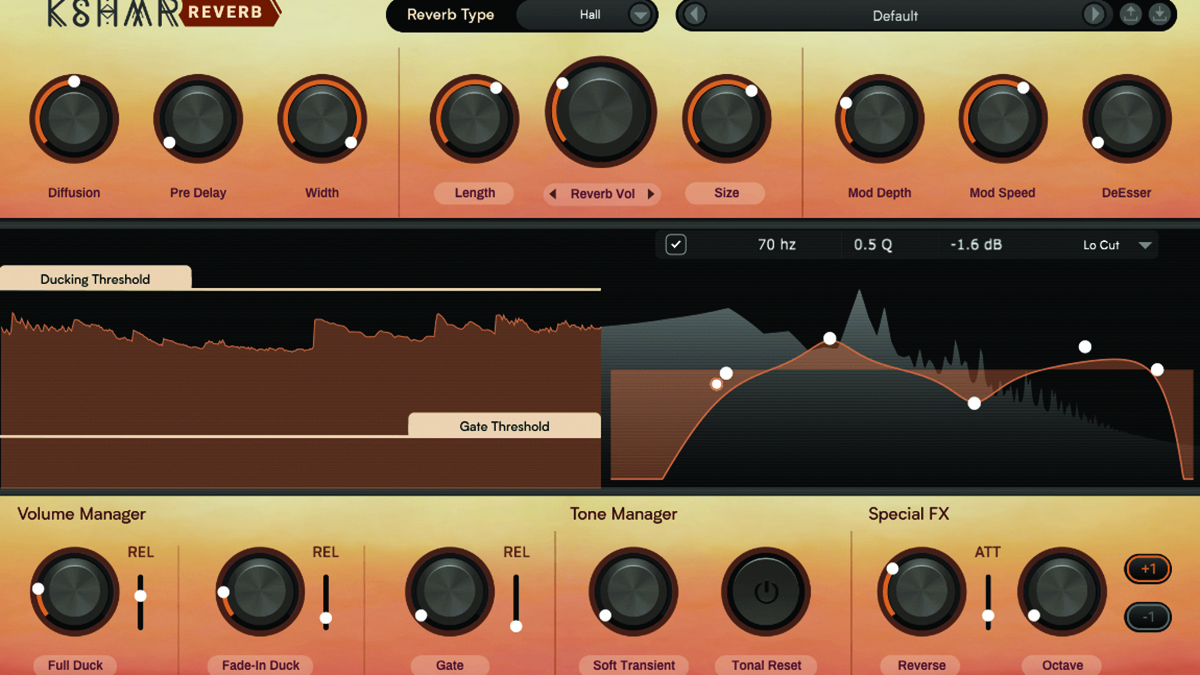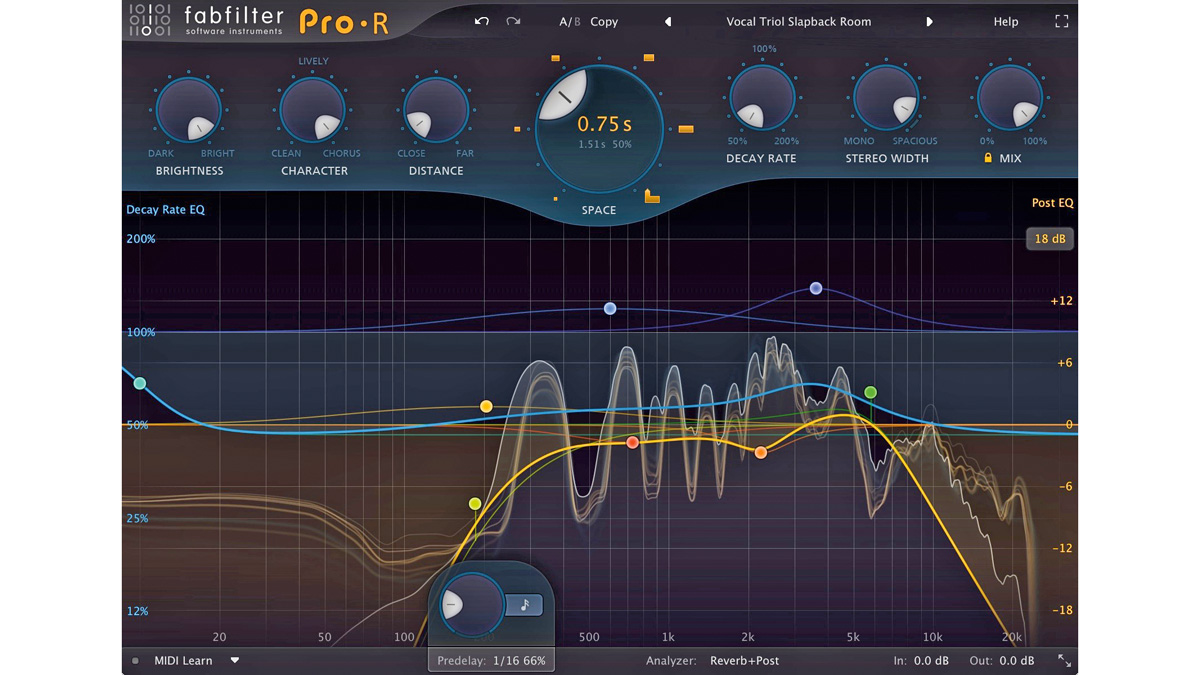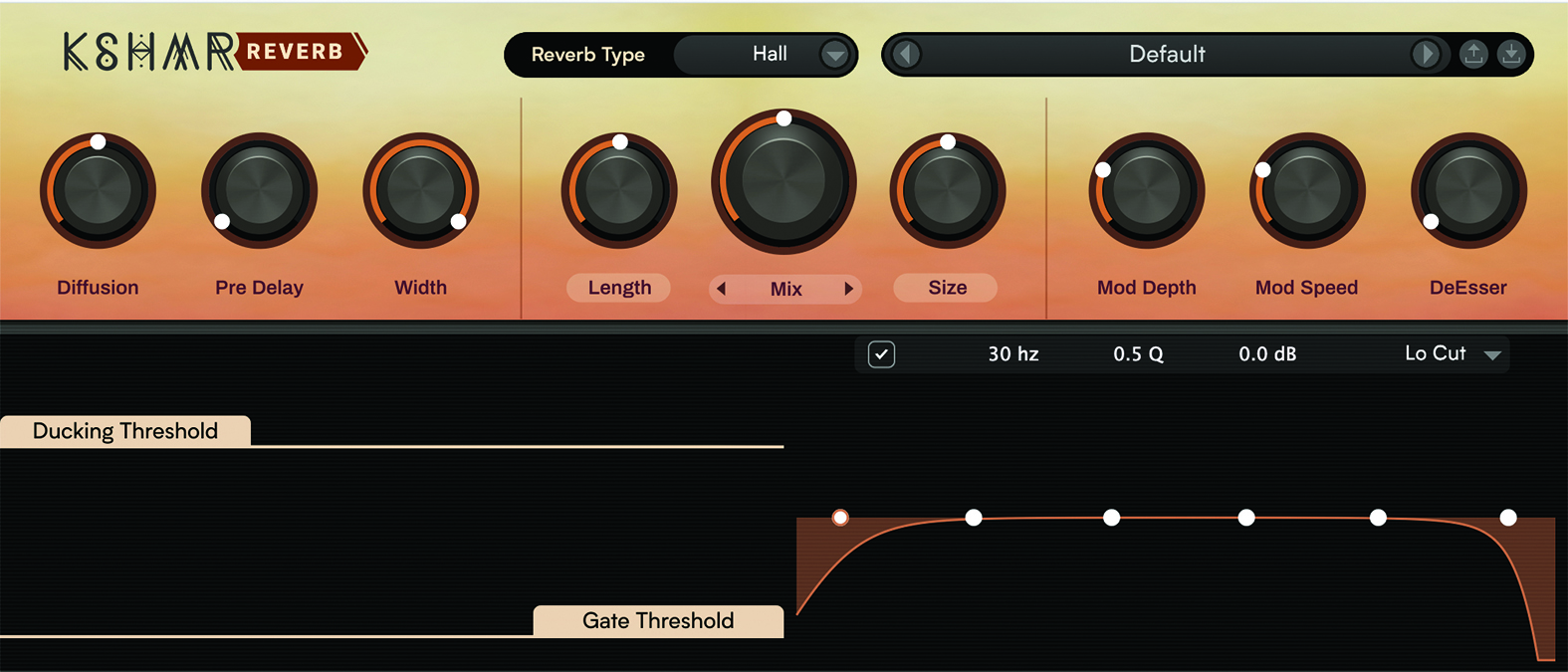MusicRadar Verdict
A great-sounding reverb with creative and unique effects for music producers. KSHMR Reverb streamlines all of his secret reverb techniques in this easy-to-use plugin.
Pros
- +
Exceptional effects for creating reverb.
Cons
- -
No numeric values on Thresholds.
MusicRadar's got your back
W.A. Production KSHMR Reverb: What is it?
Internationally renowned music producer KSHMR has released his first reverb plugin with W.A. Production and with it, comes a gamut of unique features. KSHMR has built many of his reverb tricks into the plugin including reverse swells, transient softening and removal, as well as side-chaining.
The layout of KSHMR Reverb is straightforward, and the features are clearly laid out. Across the top panel are the Reverb Types, including Hall, Plate, or Spring. There’s a drop-down menu that grants access to a wide variety of the main man’s presets.
KSHMR Reverb includes standard reverb parameters like diffusion, pre-delay, width, length and size. The Mix Knob is a special feature and the modes can be switched by clicking Mix. Mix mode controls the balance between dry and wet volumes, and Reverb Volume mode controls only the reverb volume.
When the reverb volume is increased, the Dry signal stays at 100%. This mode works in a similar way to sending the Reverb to a return signal. There’s a De-Esser, Mod Depth and Mod Speed for controlling the intensity and speed of fluctuation of reverb.
In the Middle Panel, there’s an EQ for shaping the overall sound, the Ducking Threshold, which catches the peaks of the waveform, and the Gate Threshold which catches the lowest points of the waveform. These thresholds tell the effects in the bottom panel when to activate. One parameter that was noticeably missing on both Thresholds is a numeric value.

W.A. Production KSHMR Reverb: Performance and verdict
What really makes KSHMR Reverb stand out from other plugins are the effects in the bottom panel. Full Duck is similar to putting a compressor on the reverb that’s side-chained to the main sound.
What really makes KSHMR Reverb stand out from other plugins are the ducking effects in the bottom panel
This feature can be useful when used on instrumentation. For example, when a piano part plays, the reverb will drop down in volume and be audible between the chords. The amount that the reverb’s volume is lowered is controlled with the Full Duck knob, and the Release knob controls how long it takes the reverb to fade back to normal volume.
Want all the hottest music and gear news, reviews, deals, features and more, direct to your inbox? Sign up here.
The difference between Fade-In Duck and Full Duck is that Fade-In Duck occurs at the initial transient of a sound and fades back in as the sound plays. Fade-In Duck will sound more natural to the listener. Reverse reverb is used to create swells that glue a melody together. Reverse reverb rises until the next transient occurs and it creates a swelling effect by increasing the volume of the reverb tail.

Tonal reset
Tonal Reset is a feature that we really found helpful in cleaning up the reverb in a mix. Naturally, when a reverb is long, the reverb bleeds into the next notes in a chord progression. Tonal Reset detects the transients and restarts the reverb every time a new transient occurs.

• FabFilter Pro-R
Superb sound quality, including multi-second special effect reverbs and lush ambient and slap-back.
• Eventide Blackhole
With more than 50 presets, it’s very simple to use and covers areas of differing sizes.
Soft Transient is useful for eliminating harsh attacks from the reverb and creating a more tonal sound. We recommend using it on synths or plucks. Gated Reverb is a classic effect that’s especially useful for snares and can be used to tighten up reverb tails. The Gated Reverb can silence the reverb when it falls below the threshold and the release can be adjusted to make it sound more natural.
Pitched Reverb can be a cool effect and we were happy to see the Octave feature included. Octave adds an octave harmony pitched up or down 12 semitones to your signal. This lets producers thicken the timbre of instruments and create richer, more complex sounds.
So, overall our fun experience with KSHMR Reverb gives us no qualms about declaring it a great-sounding reverb that would be a welcome addition to any producer’s toolbox.
MusicRadar verdict: A great-sounding reverb with creative and unique effects for music producers. KSHMR Reverb streamlines all of his secret reverb techniques in this easy-to-use plugin.
W.A. Production KSHMR Reverb: The web says
"The rhythmic controls make it perfect for adding unique twists to rhythmic material like loops and other percussion. It’s also a delight to use, and the visual feedback in the compression and EQ sections makes it easy to get useful results quickly."
Attack Magazine
W.A. Production KSHMR Reverb: Hands-on demos
W. A. Production
Jon Sine
Zen World - Evolution of Sound
Weaver Beats
W.A. Production KSHMR Reverb: Specifications
- macOS 10.13 and later.
- Windows 8 and later (32-/64-bit).
- AAX – ProTools 11 or higher.
- CONTACT: W.A. Production
